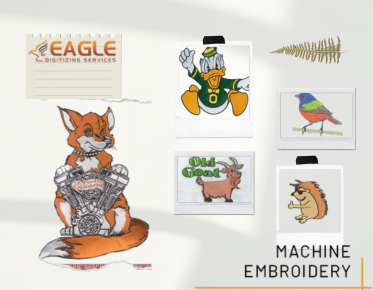Embroidery Machines and Their Acceptable File Formats
Embroidery machines have revolutionized the textile industry by automating the intricate process of embroidery, allowing for precision and efficiency that manual methods cannot match. However, to fully leverage the capabilities of these machines, understanding the various file formats they accept is crucial. These formats dictate how designs are interpreted and executed by the machine. In this blog, we will explore the different file formats used by embroidery machines, their compatibility, and how they impact the embroidery process. For more detailed insights, you can explore resources on Embroidery Machines.
Understanding Embroidery File Formats
Embroidery file formats are digital instructions that tell an embroidery machine how to stitch a design. These files contain data about stitch types, colors, and stitch sequences. The choice of file format can affect the quality and accuracy of the final embroidered product. Some of the most common file formats include DST, PES, JEF, and EXP, each with its own unique characteristics and compatibility with different machine brands.
DST Format
The DST format is one of the most widely used formats in the embroidery industry. It is a stitch-based format that is compatible with many commercial embroidery machines. The format is known for its simplicity and reliability, making it a favorite among professionals. However, it does not support color information, which means that color changes must be manually inputted into the machine.
PES Format
The PES format is primarily used by Brother and Babylock embroidery machines. Unlike DST, PES files contain color information, which simplifies the embroidery process by reducing the need for manual color input. This format is particularly popular among home embroiderers due to its user-friendly nature.
JEF Format
JEF is the native file format for Janome embroidery machines. It supports a wide range of design features, including color information and stitch types. JEF files are known for their versatility and are often used in both home and commercial settings.
EXP Format
The EXP format is commonly used with Melco and Bernina embroidery machines. It is a stitch-based format similar to DST but includes additional data for color changes. This makes it a more comprehensive option for those looking to streamline their embroidery process.
Choosing the Right Format
When selecting a file format for your embroidery project, consider the type of machine you are using and the complexity of your design. For instance, if you are using a Brother machine, a PES file would be ideal due to its compatibility and color information. On the other hand, if you are working with a commercial machine, a DST file might be more appropriate due to its widespread acceptance.
Converting Between Formats
In some cases, you may need to convert a design from one format to another to ensure compatibility with your machine. This can be done using embroidery digitizing software, which allows you to import a design in one format and export it in another. It is important to note that not all features may be preserved during conversion, so it is advisable to check the design thoroughly before proceeding with embroidery.
Future Trends in Embroidery File Formats
As technology continues to advance, we can expect to see further developments in embroidery file formats. This includes the integration of more complex design features and enhanced compatibility across different machine brands. Additionally, the rise of cloud-based embroidery software may lead to new formats that facilitate easier sharing and collaboration on embroidery projects.
For those looking to delve deeper into the world of embroidery digitizing, Eagle Digitizing excels in providing professional embroidery digitizing services, ensuring every design is crafted with unmatched precision. As the industry evolves, staying informed about the latest trends and technologies will be key to achieving success in your embroidery endeavors.


 Digitized Embroidery.png)
.png)